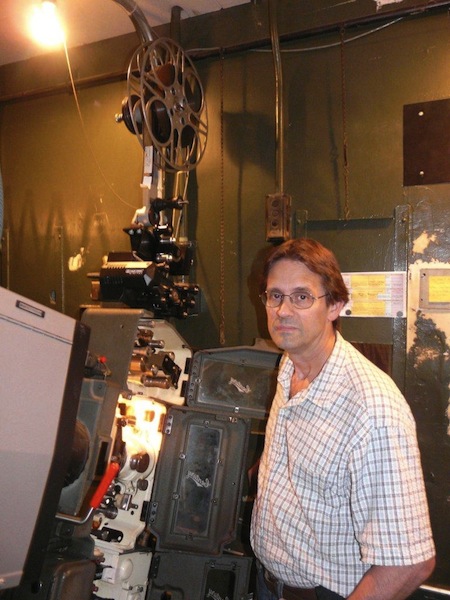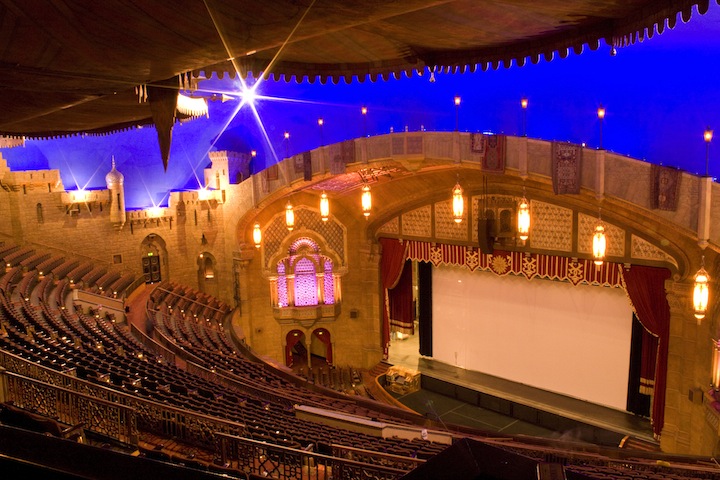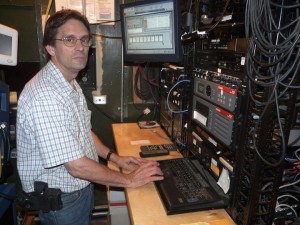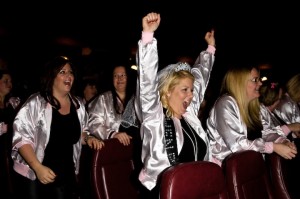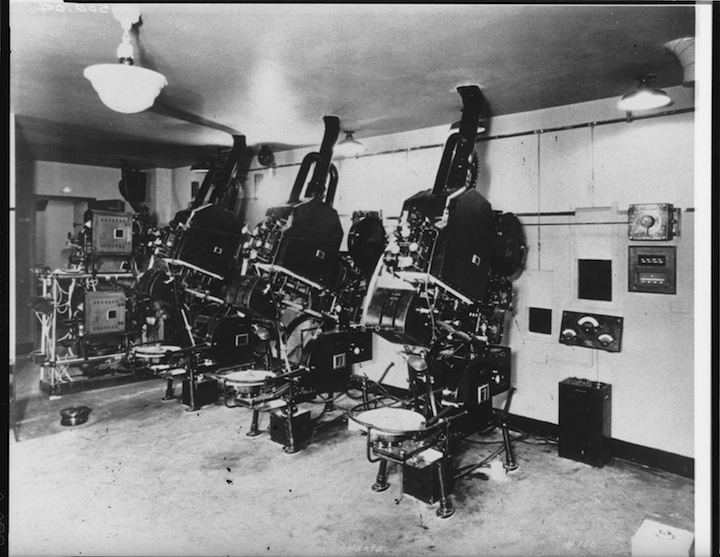 LAWRENCE OF ARABIA (1962); Dir. David Lean; Starring Peter O’Toole, Omar Sharif, Alec Guinness, Anthony Quinn, Anthony Quayle, Claude Rains, Jack Hawkins; FIVE NIGHTS ONLY! Wed. Jan. 1 – Sun. Jan. 5 at 7:15 pm; Plaza Theatre; Trailer here.
LAWRENCE OF ARABIA (1962); Dir. David Lean; Starring Peter O’Toole, Omar Sharif, Alec Guinness, Anthony Quinn, Anthony Quayle, Claude Rains, Jack Hawkins; FIVE NIGHTS ONLY! Wed. Jan. 1 – Sun. Jan. 5 at 7:15 pm; Plaza Theatre; Trailer here.
By Andrew Kemp
Contributing Writer
When Peter O’Toole passed away on December 14, blogs everywhere became choked with memorial blurbs and retrospectives, and not without reason. O’Toole was, no question, one of the greatest and most legendary personalities in the movies. Full stop.
However, one recurring theme I noticed on these sites was the offering of the little-known gem, some less-traveled, cultier role of O’Toole’s sent forth to remind fans that the actor was much, much more than just his most famous roles. And while, yes, films like MY FAVORITE YEAR, THE STUNT MAN and THE RULING CLASS certainly make the case for O’Toole as an actor of tremendous charisma and power—my apologies to fans of KING RALPH—there seemed a conscious effort by writers to ignore the big drunken, happy, English elephant in the room: O’Toole’s work in LAWRENCE OF ARABIA. Writers either assumed their readers were already familiar with LAWRENCE or that they would turn up their nose at what has, unfortunately, become something of a cinematic vegetable one has to power through at some point in life. Ignoring the suspicious notion that LAWRENCE is still much-watched and enjoyed by today’s younger generations, if only one movie can summarize O’Toole’s greatness, that movie has to be LAWRENCE OF ARABIA, doesn’t it? While each of those films I named above has its strengths and merits, they’re all, by definition, weaker examples of O’Toole’s brilliance because, quite simply, LAWRENCE OF ARABIA is one of the greatest films ever made, and O’Toole in it gives maybe the most electric star-making performance in the history of the art form. It’s LAWRENCE. It always had to be LAWRENCE.
LAWRENCE OF ARABIA (1962) is the kind of movie that sounds like dull dirt on paper (or, in this case, dry sand), ostensibly a biography film of the war hero T.E. Lawrence, an officer who united feuding groups of Arabs against the Ottoman Empire during the first World War. Lawrence was a larger-than-life figure whose exploits defied reality, and so the job of capturing this British hero’s story on film fell to that great British director David Lean. Lean had made his name with intimate family dramas and Charles Dickens adaptations, but three straight films [THE BRIDGE ON THE RIVER KWAI (1957); LAWRENCE OF ARABIA (1962); DOCTOR ZHIVAGO (1965)] would link him forever with the screen epic. Lean’s film jettisons the usual biographical bookending and fixates on the key years of Lawrence’s military campaign, his victories, his struggles and the eventual failure of his plan to save Arabia for the Arabs.
But the movie is far more than the sum of its plotline. It’s not quite accurate to say that one could watch LAWRENCE OF ARABIA and ignore the war scenes, but it certainly feels like that’s the case. Lean is less interested in the deeds than he is in the land, and he shoots the desert not as a desolate or alien place, but with awe, majesty, and romance. Coupled with one of the all-time best musical scores from Maurice Jarre, LAWRENCE is an achievement in image, one of the landmark films of cinematography. The movie is never, at any point, anything but staggering to look at.
But then there’s Peter O’Toole, an actor so grandiose as to make the desert seem small. Although Lawrence was shot in a time of method acting and cinematic naturalism, that’s not O’Toole. He’s an actor of extreme mannerism and crisp efficiency, and his clear, sad blue eyes seem to be an incongruous fit for the brutality around him. And yet he’s grander than the desert and the war combined, striding across the landscape in great strokes and changing the fate of a continent with his whims. Ridley Scott’s PROMETHEUS (2012) supposed that the robots of the future might look to Peter O’Toole for inspiration on how to dress and behave, and there’s crystalline truth in that idea—O’Toole’s Lawrence is at once an ideal human, but also another kind of being. He’s mythic, synthetic. His gravity is so large that overshadows the other great actors who surround him. Anthony Quinn, Alec Guinness, Claude Rains—all are just notes surrounding O’Toole’s Lawrence. Without him, the desert is empty. Without O’Toole, the movie falls apart. Although he had a tremendous career, O’Toole would never again transcend a role in quite the same way.
I’ve watched LAWRENCE OF ARABIA many times on DVD, and I’ve had the great fortune to have seen the film three times on the big screen, once in its intended 70mm projection. If there was ever a single, undefeatable argument for the magic of cinema trumping the convenience of a living room couch, it is LAWRENCE OF ARABIA. Watching LAWRENCE properly projected, with a booming sound system, is like finally getting a glance at that “window to another world” nonsense the Oscars roll out every year in their self-serving montages. (That O’Toole was snubbed for his work in this film and, indeed, each and every subsequent film he made reminds us that movie awards are, fundamentally, bullshit.) At the time of its production, it was inconceivable that the film would ever be seen on home video or, god forbid, your tiny phone screen. Every choice of lens, frame and composition was made with the assumption that the audience would be confronted with a giant screen and have no choice but to lose themselves in the scale. More than almost any other film, LAWRENCE OF ARABIA suffers outside of its intended environment.
If you’ve seen the film, nothing I’ve just written is a surprise. I’m speaking to the people who haven’t seen it, who have somehow lumped LAWRENCE in with CITIZEN KANE (1941) (another great film unfairly burdened with the label of “great”) as a bit of cinema homework they’d rather put off until the mood is right. But LAWRENCE OF ARABIA is no vegetable, it’s a 12-course meal. And on the big screen, in our contemporary multiplex environment of cinematic sameness and digital paintbrushes, LAWRENCE OF ARABIA reminds us of cinema’s power to transform and ignite the passions of its audience. The film, anchored by this best performance from a much-missed legend, remains a fresh drink of water in what sometimes seems an endless sea of sand.
Andrew Kemp is a screenwriter and game designer who started talking about movies in 1984 and got stuck that way. He can be seen around town wherever there are movies, cheap beer and little else.



